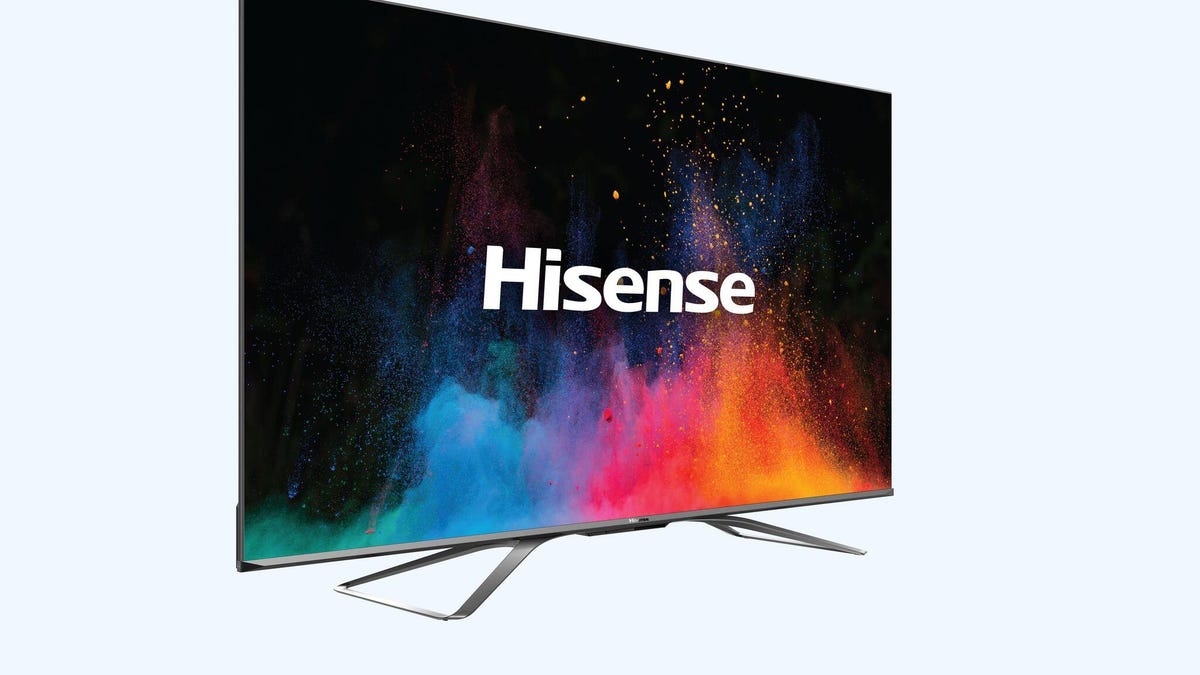Hisense dual-cell LCD tech highlights TV lineup at CES 2020
After being teased last year, Hisense's OLED rival is getting ready to hit the market.

The dual-cell XD9G is scheduled to arrive in a 65-inch size in the third quarter.
Hisense first demonstrated its intriguing dual-cell LCD TV technology last year, and now at CES 2020 the China-based company is back with some new details. Called the Hisense XD9G, the TV layers two liquid crystal modules one on top of the other inside a single cabinet, allowing for black levels that the company says will rival OLED. Hisense wouldn't give the exact price, saying only that it'll be cheaper than a comparable OLED screen -- for reference LG's 65-inch B9 hit a low point of $1,800 last year. The Hisense XD9G is scheduled for a third-quarter US release in a 65-inch size.
In addition to the new dual-cell TV, Hisense is introducing a bunch of less-expensive sets. Most will run the Android TV operating system with Google Assistant and pack support for Dolby Atmos audio and Dolby Vision video.
On the Android TV side, the company is introducing the H9G Quantum, an update to last year's H9F, with added local dimming zones (132 on the 55-inch and 180 on the 65-inch) for better contrast, with peak brightness topping 1,000 nits. Also new are far-field mics built into the bezels, great for yelling at your TV hands-free (and summoning the Assistant with an "OK Google"). Pricing will start at $700 for the 55-inch model, with a 65-inch version available for $1,000. It's slated for US availability in April.
The cheaper H8G Quantum will also add local dimming zones in its 2020 refresh, with a peak brightness of 700 nits. Both the H8G and H9G will use quantum dot technology in their displays. Though the H8G lacks far-field mics, you can talk to Google by hitting a button on the remote. Set to be available in March, the H8G starts at $400 for a 50-inch, going up to $500 for a 55-inch, $700 for a 65-inch and $1,400 for a 75-inch.
On the cheaper side of things will be the H65G, with 4K resolution and Android TV (but no local dimming), at prices ranging from $270 for the 43-inch model up to $1,500 for an 85-inch set.
Those who don't care for 4K, or who want a smaller display (where the added pixels won't provide as much value), will have options in the H55G, which starts at $140 for the 32-inch model and goes up to $230 for a 43-inch set. Both the H65G and H55G are slated to hit the US in the third quarter of the year.
On top of the new Roku-powered, local dimming-equipped R8F, which Hisense announced late in 2019 and just started shipping, the company plans to have a host of cheaper Roku TVs arriving later this year. They range from $115 for a 32-inch H4 TV to $500 for a 65-inch 4K H6 model that includes a voice remote. There'll also be a middle series known as the H5, but pricing and details are scarce.
Beyond the TVs, Hisense will also have an updated short-throw L5 laser projector that runs Android and ships with a 100-inch screen. The projector should be available in the US in April, for $6,000.

